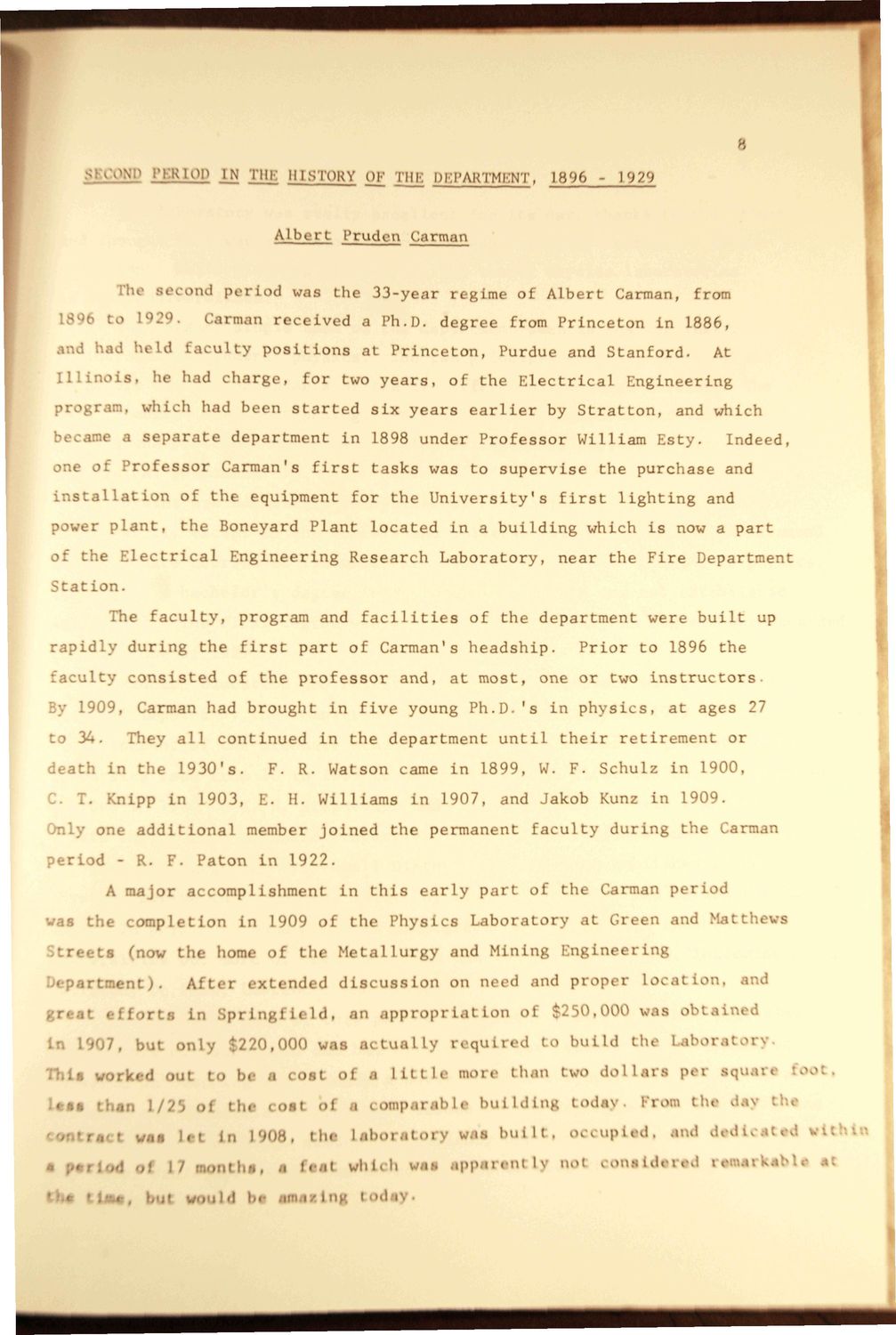Caption: Book - Century of Physics (1973)
This is a reduced-resolution page image for fast online browsing.

EXTRACTED TEXT FROM PAGE:
H KKiop IN Tin.; Hi rORY OK i HE DEPARTMENT, 1896 - V)r> Albert Prudcn Carman I I lecond period was the 33-year regime of Albert Carman, from Carman received a Ph.D. degree from Princeton in 1886, At 96 to L<>29. and had held faculty positions at Princeton, Purdue and Stanford. Illinois, he had charge, for two years, of the Electrical Engineering program, which had been started six years earlier by Stratton, and which became a separate department in 1898 under Professor William Esty. Indeed, one of Professor Carman's first tasks was to supervise the purchase and installation of the equipment for the University's first lighting and power plant, the Boneyard Plant located in a building which is now a part of the Electrical Engineering Research Laboratory, near the Fire Department Station. The faculty, program and facilities of the department were built up rapidly during the first part of Carman's headship. Prior to 1896 the faculty consisted of the professor and, at most, one or two instructors By 1909, Carman had brought in five young Ph.D.'s in physics, at ages 27 to 34. They all continued in the department until their retirement or F. R. Watson came in 1899, W. F. Schulz in 1900, death in the 1930*s. C. T. Knipp in 1903, E. H. Williams in 1907, and Jakob Kunz in 1909. Only one additional member joined the permanent faculty during the Carman period - R. F. Paton in 1922. A major accomplishment in this early part of the Carman period was the completion in 1909 of the Physics Laboratory at Green and Matthews Streets (now the home of the Metallurgy and Mining Engineering partment;. After extended dlSCUSeion on need and proper location, and great efforts in Springfl< Ld, an appropriation of $250,000 was ob in 19 . but only S 20,000 was actually r e q u m 1 to build the Ltborat Thta laaa t lead out to ba a cost of a little nor« than two dollars par sqv e 1/ I ol the coat < i . comparable building toda\ Pi tlu- day > . J : an let in L908, ths laboratory waa built, occupied, and <. - * Lng i ' a period o* 1/ month*, a «iat which was apparently not coneldered vm* to 1 la*, t • would he a
|